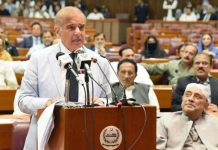
Towards the end of January, a few days after Republic Day and a little over a week after the Congress’s conclave in Jaipur, large half-page advertisements appeared in major newspapers: “Celebrating the 63rd year anniversary of our Republic by putting food on everybody’s plate.”
Below the photographs of the prime minister, head of the Congress and the food minister, a graphic showed grain falling onto a plate, and stratifying itself into the saffron, white and green of the national flag. “The time has come” proclaimed the ad, “to eradicate the scourge of hunger.”
With this grandstanding, the Congress announced its intention of introducing the National Food Security Act in the current session of Parliament. The Act, which seeks to make food a legal entitlement as opposed to a handout, has been in the making for a few years. Now finally, with polls looming in 2014, the government is eager to see it through.
Speaking at a conference on hunger on 15 February, economist Amartya Sen repeated what’s been said so many times that it’s become a truism, “that the extent of India’s nutritional crisis was appalling”.
Twenty-two percent of the population is undernourished, and according to the latest data, which unfortunately dates back to 2005-06, more than 40 percent of children under the age of three are underweight. The per capita availability of rice and wheat had dropped from 203.7 grams and 160 g in 2000 to 188.4 g and 154.7 g in 2009.
The Act was long overdue. That it looked like it would be passed by Parliament soon, said Sen, was a “very good thing”.
The outlines of the Act were first put forward by the Sonia Gandhi-led National Advisory Council (NAC) in mid-2010. It suggested that the legal entitlement to food should cover 90 percent of rural and 50 percent of urban areas.
The poorest households in these areas (which would include 46 percent of the rural population and 28 percent of the urban) were to get 35 kg of subsidised grain every month, with millets at Rs 1 per kg, wheat for Rs 2 per kg and rice at Rs 3 a kg. The other households would get 20 kg of grain a month at a price that wasn’t specified, but was to be less than half the minimum support price, the price the government paid to procure it.
Given that the average house consists of five people, this worked out to about 7 kg of grain per person every month.
Some of these provisions were changed in the initial Bill that was put before Parliament in December 2011 and then by a Parliamentary Standing Committee to which the Bill was subsequently referred. The committee submitted its recommendations on 17 January.
It suggested that the population the Bill should cover be brought down to 75 percent of the rural population and 50 percent of the urban. Categories within these have been done away with, and the entitlement made a uniform 5 kg of grain per person per month (Rs 1/kg for millets, Rs 2/kg for wheat and Rs 3/kg for rice).
The committee argued that the targeting of subsidies has been flawed and prone to misuse. Instead, it recommended that the Centre define a “criteria in consultation with the state governments for exclusion of 25 percent population in rural and 50 percent population in urban areas”.
Since the exclusion ratios are for the country as a whole, state-wise ratios would have to be calculated, where a larger percentage of the population would end up being included in poorer states and wealthier states might end up getting lower allocations than they currently do.
This, the committee suggested, could be based on the ongoing Socio-Economic and Caste Census, though economist Jean Dreze, who was part of the NAC that drafted the Bill, believes that the exclusion criteria is best left to individual states to decide.
He has also warned that “the exclusion ratios are dangerously large, and that food entitlements should have been 7 kg per person per month”.
However, the parliamentary committee justified the reduction in quantity based on statistics that suggest that the act, with these provisions, would entail an annual procurement of 65 million tonnes of grain. In 2010-11, procurement was 62.5 million tonnes (a little over 34 percent of the total production). This rose to 73.2 million tonnes in 2011-12.
A significantly higher procurement of grain by the government could lead to serious distortions in market prices. For the Act to be sustainable in the long run, the legal entitlements could not be made higher.
Of course, states like Chhattisgarh, in which the public distribution system (PDS) covers 90 percent of the population, and Tamil Nadu, which has universal coverage, would have the freedom to continue with these as long as they meet the basic requirements of the Act.
However, on 13 February, at a meeting of food ministers, the Chhattisgarh minister said that the coverage envisaged in the Act was not acceptable to it, and his Tamil Nadu counterpart requested the state be left out of its purview since they already had a “robust” and universal system.
Other states have protested that the move to a per capita entitlement could adversely affect the poorest families, who currently get 35 kg of grain per month irrespective of family size under the Antyodaya Anna Yojana (AAY).
Predictably, richer states like Haryana and Gujarat have been against a financial categorisation of states.
In response to this criticism, in a hurried attempt to build a consensus, Union Food Minister KV Thomas announced that the government will leave AAY entitlements and the current allocation of states untouched. How the government plans to do this, and what implications it will have on food procurement calculations, are unclear.
Agencies like Unicef have pointed out that in order to improve nutritional standards, the National Food Security Act needs to include pulses, oils and dairy products. The committee has acknowledged this by introducing a mention of these, but the food ministry says that since the bulk of pulses and oils are imported, including them isn’t viable.
Women and children are the most vulnerable when it comes to food security, and they are a significant focus of the Act. It entitles pregnant women and lactating mothers to “nutritious” meals and a maternity benefit of Rs 1,000 per month for six months. Children between six months and six years would get either meals or rations to take home, and those between six years and 14 are entitled to a mid-day meal at school.
Here, the committee has expanded the entitlements, suggesting that women be given an additional 5 kg of grain per month for two years after childbirth (in addition to the child’s share). According to it, children below two were unlikely to be taken to centres for cooked meals, so this provision has been limited to children between two and 16 years.
“Why is there no mention of the Integrated Child Development Scheme (ICDS), one of the oldest and most important programmes for women and children?” asks Shantha Sinha, head of the National Commission for Protection of Child Rights.
Ironically, it was the Ministry of Women and Child Development, which administers the scheme that was against its inclusion in the National Food Security Act. “The scheme,” it said, “is confronted with programmatic and operational gaps which would need to be addressed first. Therefore, the time is not ripe yet for making the entitlements legal through an Act of Parliament.”
Including the scheme in this Act, claimed the ministry, could be detrimental to it. It would continue in parallel, outside the ambit of the Act.
However, this is not acceptable to critics like Sinha. “A legal framework is the expression of the state’s commitment,” she says, “and if we are talking about universal food availability, ICDS and the anganwadi centres that administer it, need to be included.”
States also vary hugely in the efficiencies of their PDS systems. “The biggest challenge is going to be the implementation,” says Montek Singh Ahluwalia of the Planning Commission, “we will have to wait and see.”
The Act is probably going to undergo many changes before it is presented in Parliament, some sensible and some dictated by politically expediency. But everyone seems to agree that it’s time has come. The proof will be in the eating.













